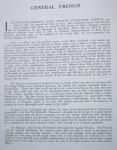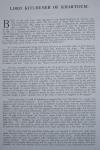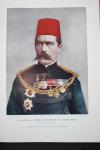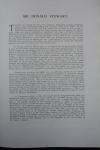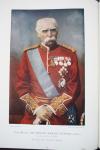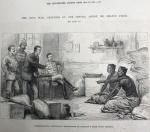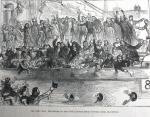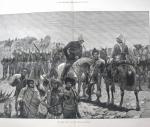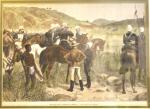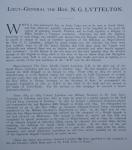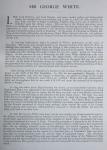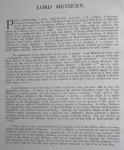-
Posts
13,225 -
Joined
-
Last visited
-
Days Won
22
Content Type
Profiles
Forums
Blogs
Gallery
Events
Store
Everything posted by Mervyn Mitton
-
I'm so glad I asked you about them ,Ed. The article is quite fascinating and I tend to believe the first story about the origins - the shot down pilot. It seems to have the feeling about how traditions are started. Sometimes we nod our heads when something is shown - and just assume that we know what it is all about. This proved to me exactly that ! I think they are very attractive pieces and if I were looking for a new collecting field, then I would think them worthwhile. I hope we can develop a whole post on different versions - do you know if other Countries have them - I'm thinking of Canada ?
-
JF - that is a very good question. Bugles - we know - controlled most battle manoevres and barrack activities. Drums - I've never given much thought to. Perhaps someone can give us an expert opinion ? Might they have been a 'throwback' to the days when we marched in ranks at our enemy -they would have given cadence ?
-
Something a little different. This shows the embarkation of the 17th Lancers from London Docks. These transports for cavalry had special stalls in the hold to safely transport the horses. The men - of course - looked after them. The officers' would have had their own cabins and a proper mess and kitchens.
-
This is in early January 1879 when our troops were being brought into position. This was the 3rd. column that was to attack the right flank of Zululand but, ended up being besieged in a small town called Eshowe. They were there for 4 months - but, it tied-up 20,000 Zulu men and possibly, saved us from a worse disaster. General Chelmsford is shown here (centre) making an inspection. Fort Pearson - named after the Colonel commanding the column - is shown back left. Across the river - The Tugela - is Fort Tenedos. HMS Tenedos was the guard ship at the mouth of the river and her signallers and seamen were a great help. Tenedos was just a fortified area where supplies could be brought and stored. The barge - or, punt - was manned by the seamen and was pulled across on two ropes, by oxen. She carried fifty men at a time - a half company. To the left of Chelmsford men can be seen removing their boots in order to wade out.
-
This picture has a great deal of interesting detail - and shows the accuracy of the artist. The travelling artist would make quick sketches - noting colours etc.. The full drawing would then either be completed by him - or, be sent back to the UK to be completed by other artists following the original sketch and using the notes. Basically, this is showing a Regiment on the march - cased colours being carried at the front. A prisoner has been brought in by scouts and the Colonel - on horseback is interviewing him through colonial troops and scouts. To the left of the picture, are the Colonel's hunting dogs, his gun bearers - both hunting guns and heavier ones for fighting. At the rear of the column would be the waggons, mess tents and an after guard.
-
Now that we are completing this short section on the British Forces and their weaponry, I thought I would show a few pictures from The Illustrated London News of that time. They clearly show the British way of life and how transport was achieved - even under the most difficult circumstances. I will comment where necessary. After this we will return to Zulu weaponry and also their battle tactics against the British. This is from the period following the defeat of the Zulus at Ulundi. We had to search for some time before King Cetwayo was found and taken into custody. The cavalry are, of course, the 17th Lancers, who had previously charged at Ulundi. Note that they always had Zulu guides in attendence.
-

US Air Police Warrant Badge
Mervyn Mitton replied to FrontlineAntiques's topic in Police Forces of the World
OCPD71 (may we have a first name ?) Welcome to the Forum. I am suspecting that you may be Police - perhaps retired ? The PD seems to give a clue ? I always think it's great when old posts are brought back to the top. They always seem to get more information added. -
Ed - what exactly is a 'challenge coin' ? It is beautifully cast and with good enamelling - I would have thought of it as a 'souvenir' for visitors. Is it in fact - a form of identification for the officer ?



